Harbin Z-9 Chinese Multifunctional Helicopter
The Chinese Army is planning to use a Z-9 helicopter in three basic versions. Most of the vehicles produced will be a landing variant of a helicopter, and it is also planned to use a helicopter with the installation of a large number of weapons (a strike version) designed to support ground forces on the battlefield. In addition, a special light version of the helicopter was designed for the needs of the Chinese Navy. It is worth noting that special hopes are placed on helicopters of the Z-9 series in China. The establishment of licensed production of a relatively modern French helicopter allowed the People's Republic of China to gain access to the European 80 technologies of the last century and to establish its own family of not only military, but also civilian versions of the Z-9 helicopter with a good prospect of their mass production. Currently, more than 150 helicopters of this type have been launched in China. In addition, the emerging technical groundwork allowed Beijing to begin work on the creation of the first Chinese specialized combat helicopter under the designation Z-10.
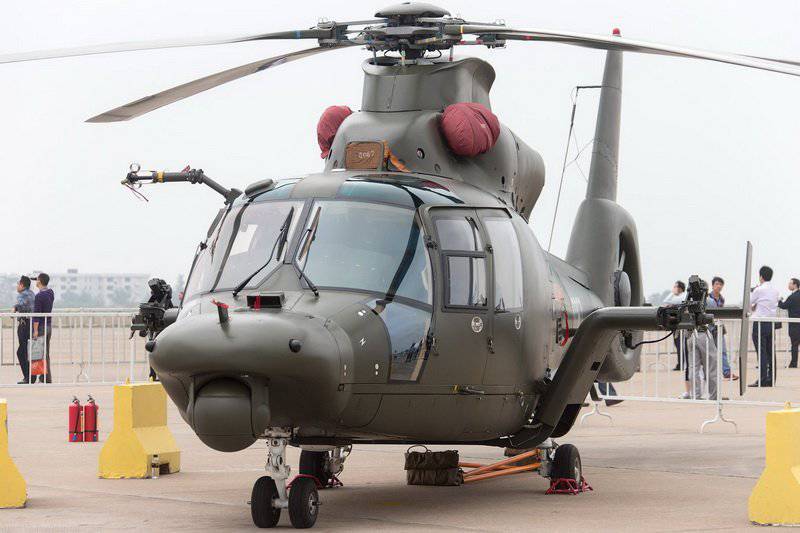
The prototype for the Chinese Z-9 helicopter was the AS 365N Dauphin II multi-purpose French helicopter. According to the license agreement signed by 2 on July 1980 with the company Aerospatiale (currently part of the Eurocopter concern), the Harbin Aircraft Building Corporation (NAMS) was to assemble the first 50 helicopters of the French parts supplied to China. Helicopter assembly was launched in the 1981 year. The first batch in the number of 28 machines was assembled entirely from components and assemblies supplied from France, the helicopters completely repeated AS 365N1. At the same time in China, the car was given a new name - Z-9.
The following 20 helicopters were also assembled from French parts and corresponded to the version of the AS 365N2 helicopter, in the People's Republic of China they received the designation Z-9A. The last of these helicopters was assembled in January 1992. After that, another 2 helicopter was produced, designated Z-9A-100. These machines were already completely Chinese development. By that time, China was able to master the launch of licensed Ariel Turbomek “Xenum” 1986X1 turbo-motor 1 hp engines at the SAEC plant in Zhuzhou. Engines produced under the brand WZ740A. The Z-8A-9 helicopters built by the airframe were assembled on 100% of Chinese parts, they had 72,2% localization on engines. The first of these helicopters took off on January 91 16, the car was certified by the end of that year. In 1992, its mass production began. The serial versions of the helicopter again received a new designation - Z-1993B. These helicopters, in contrast to the original French AS 9N, had in the 365 fenestron wider composite blades instead of metal 11.
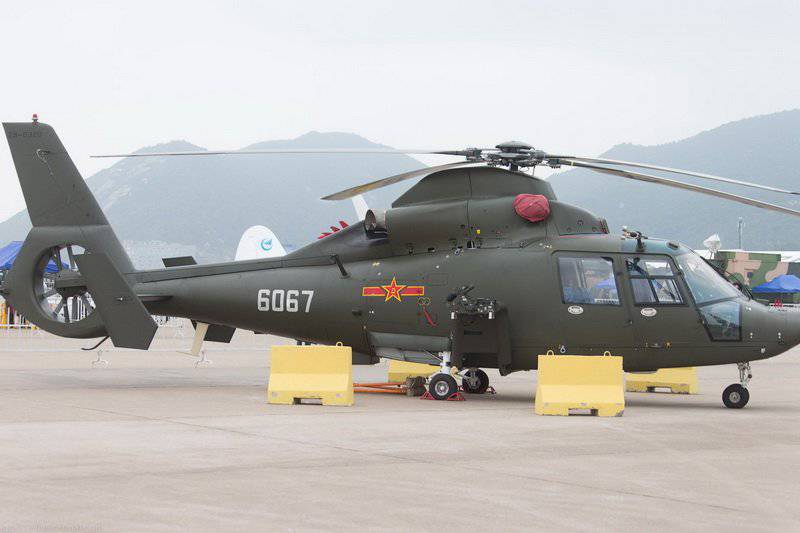
The new PLA Z-9B was adopted by the PLA in 1994. Currently, it is probably the most massive machine in the army aviation PLA. The first helicopters of this type arrived in the elite Shenyang and Beijing military districts. A multifunctional helicopter is able to carry up to 8-10 landing members with full equipment, perform communications and rescue functions, adjust artillery operations, and solve electronic warfare tasks. For the needs of naval aviation, the PLA is a modification of the helicopter under the designation Z-9C. This helicopter can be based on board frigates, destroyers, it is equipped with a search radar and lowered sonar station. The armament of a marine helicopter may consist of 2 torpedoes or anti-ship missiles with television guidance. Helicopter versions that are produced for civilian purposes have the indices H410, H410A (for hot climates), H425 (VIP version).
A distinctive feature of the new Chinese helicopter was the extensive use of composite materials in its design, which allowed, on the one hand, to reduce the weight and effective area of dispersion, and on the other, to ensure the survivability of structural elements in case of damage to them by XUUM-mm caliber bullets. In addition, to increase the survivability of the rotary-wing machine were used to protect the fuel tanks. Some vital components and assemblies of the engine and flight control systems, as well as the crew seats, were armored. It is reported that the new Z-12,7 helicopters on 9% consist of composite materials and on 59% - from aluminum alloys.
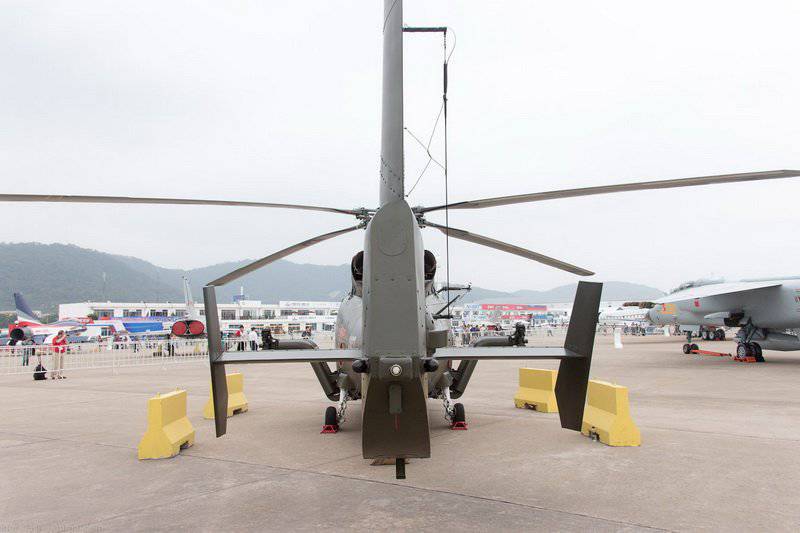
The strike version of the Z-9W helicopter is equipped with 2-23-mm automatic Type-1 guns. On the elements of the internal suspension of this helicopter can carry up to 8 anti-tank missiles HJ-8 (firing range - 3-4 km) or 2-x containers with launchers for 90 or 57-mm NUR. Also on the helicopter can be installed 2 container, equipped with machine guns caliber 12,7-mm. Beginning with the 2000, the TY-90 air-to-air SD with a thermal homing system appeared in service with the helicopter.
The Z-2005WA night attack helicopter, created in 9, differs from its predecessors, first of all by a ball mounted in the lower part of the helicopter - a gyro-stabilized optical-electronic system created by the Laoyang Center for Optoelectronic Technologies (EOTDC). This system includes infrared and television channels, which allows efficient use of the helicopter in day and night conditions. In addition, the machine was installed a new high power engine WZ8C (860 hp), new means of electronic warfare and communications. The cockpit dashboard was supplemented with 2-s with large informative, multifunctional indicators at the workplaces of each of the pilots, as well as one small indicator in the center.
Flight performance Z-9W:
Dimensions: main rotor diameter - 12,0 m., Tail rotor diameter - 1,1 m., Length - 14,46 m., Height - 3,47 m.
Empty mass - 2 050 kg., Maximum take-off - 4 100 kg.
Fuel stock - 1 135 l. in internal tanks
Engine type - 2 turboshaft Zhuzhou Aeroengine Factory WZ-8A, 2х848 hp
Maximum ground speed - 305 km / h, cruising - 260 km / h
Practical range - 1 000 km.
Static ceiling - 2 600 m., Using the earth effect - 6 000 m.
Crew - 2 man (pilot and weapon operator)
Armament: 2X23-mm Type-1 guns, 4 suspension points: Air-to-Ground UR: 8 × ATJS HJ-8E, Air-to-UR: 2 × TY-90, or 2 NUR of XUR 90-mm or 57-mm.
Information sources:
-http: //www.military-informer.narod.ru/Z-9.html
-http: //ru-aviation.livejournal.com/2490294.html
-http: //www.airwar.ru/enc/uh/z9.html
-https: //ru.wikipedia.org
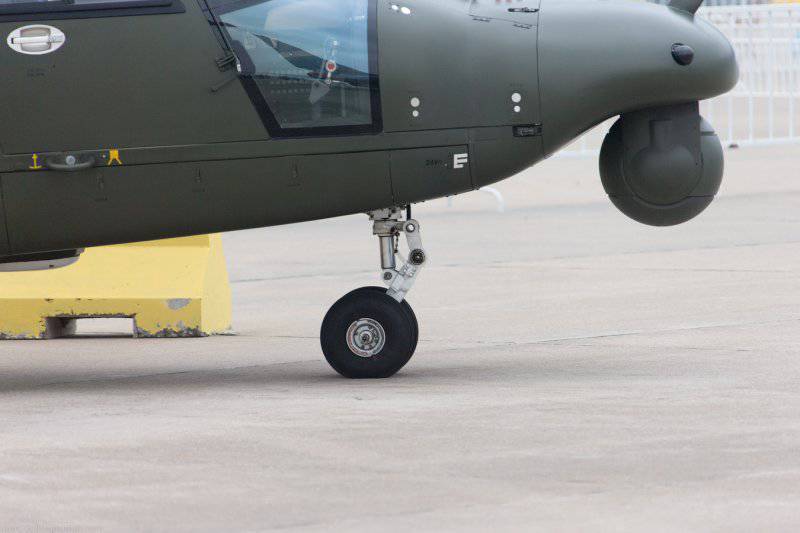
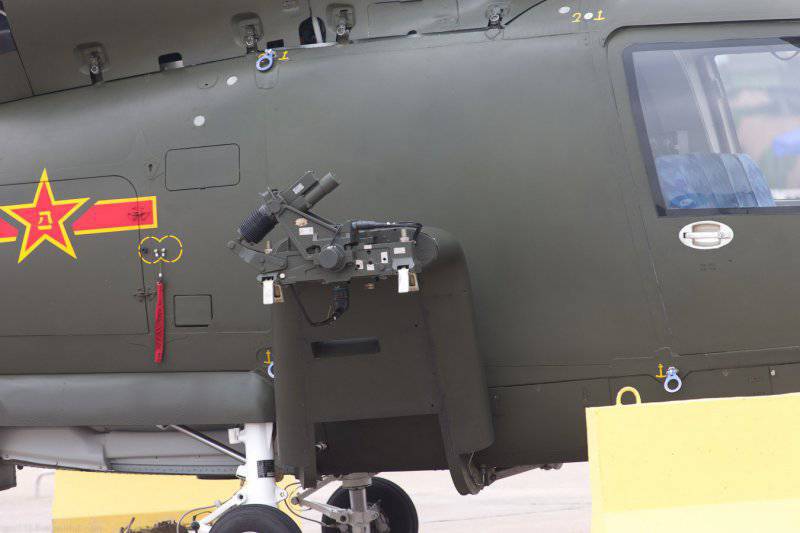
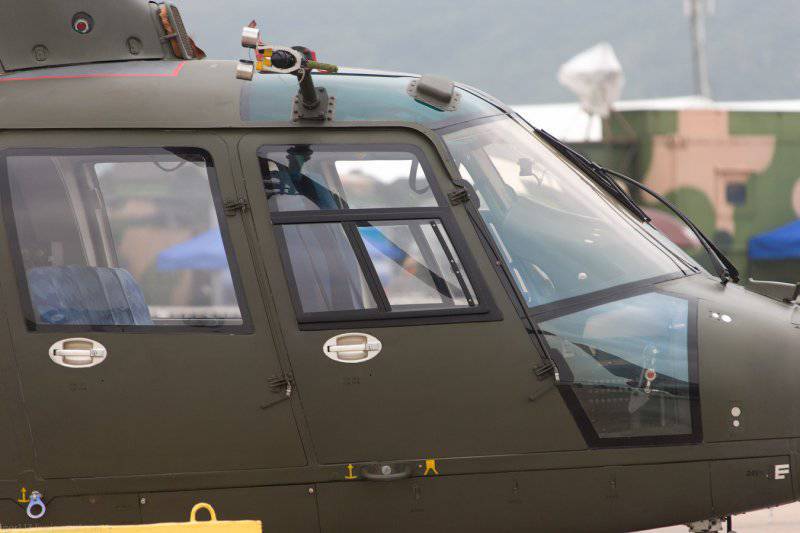
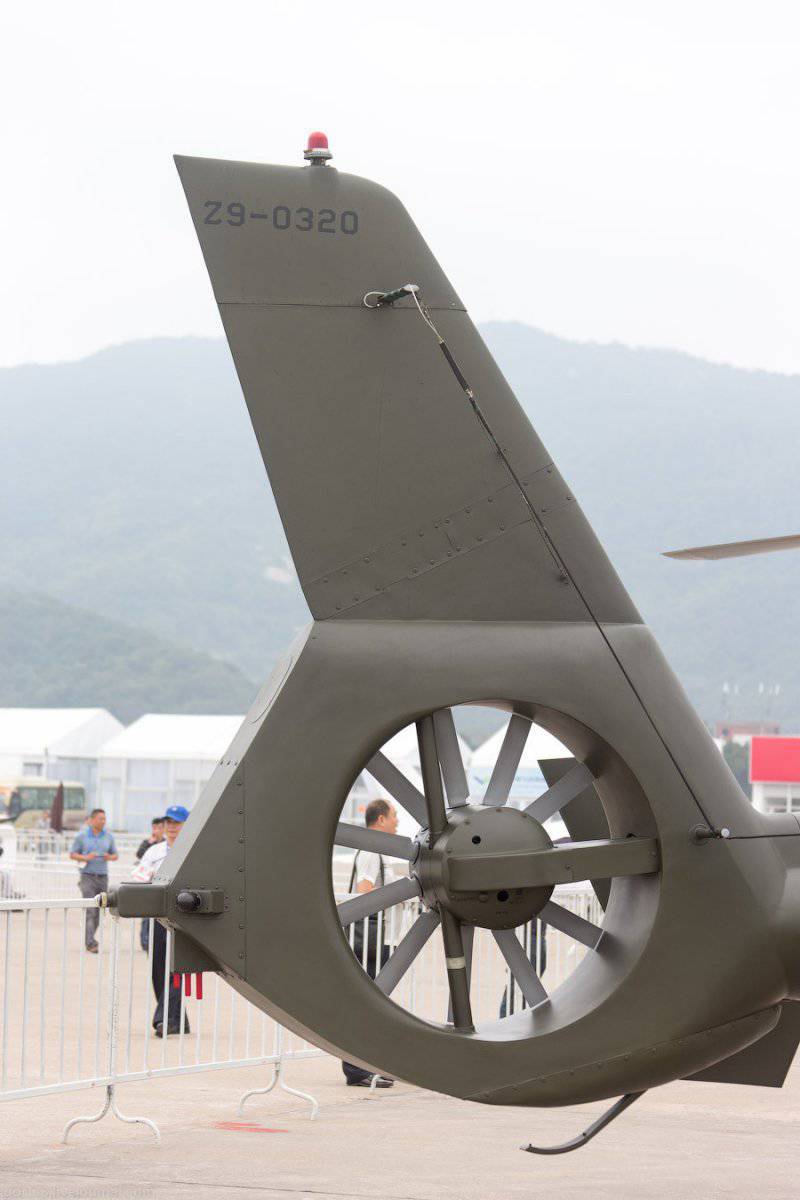
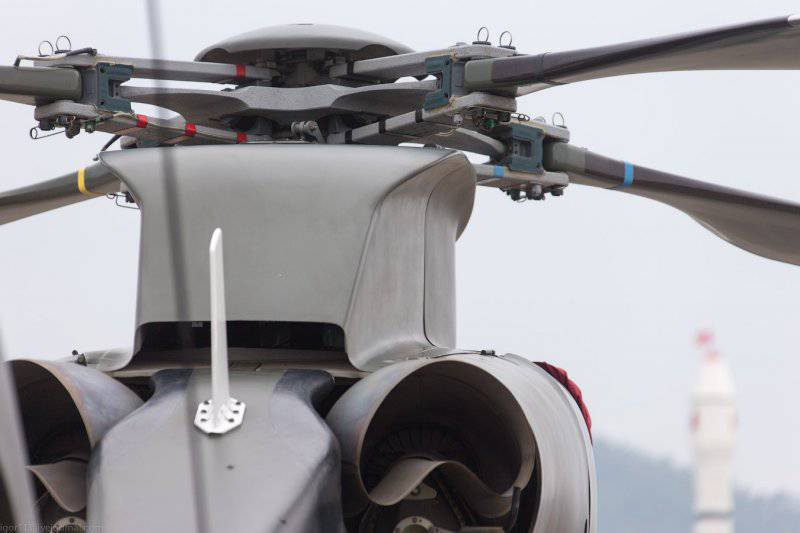
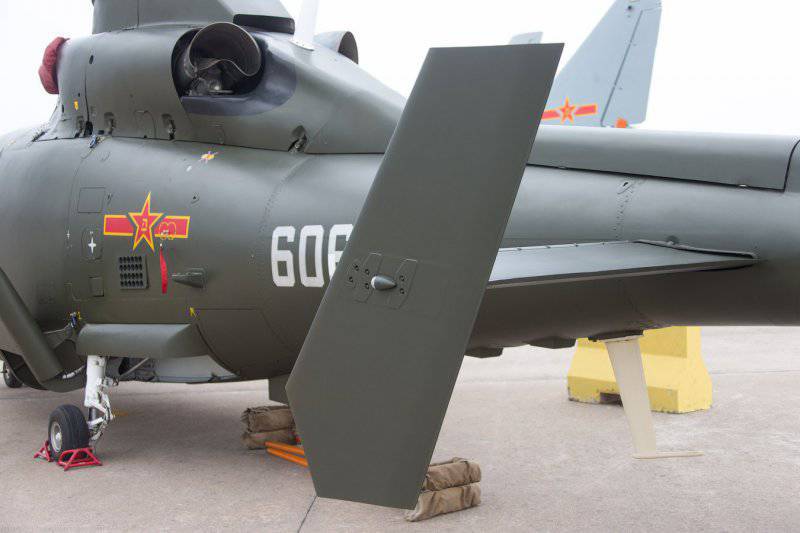
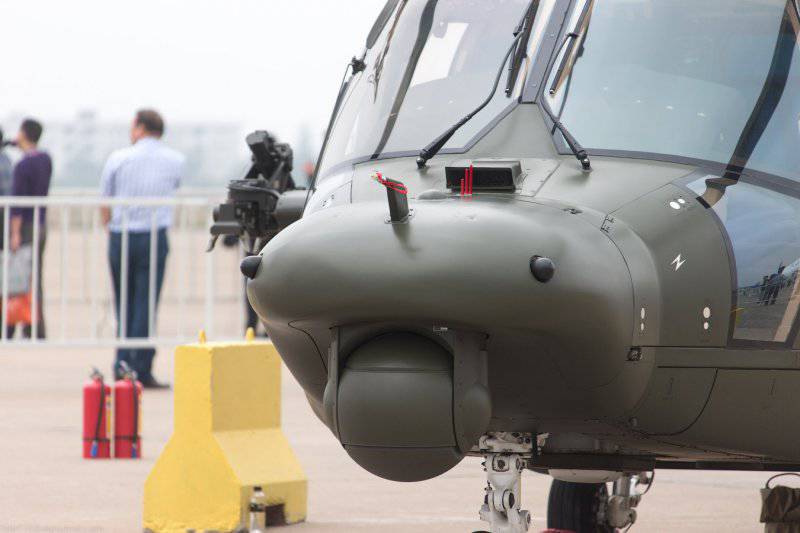

Information